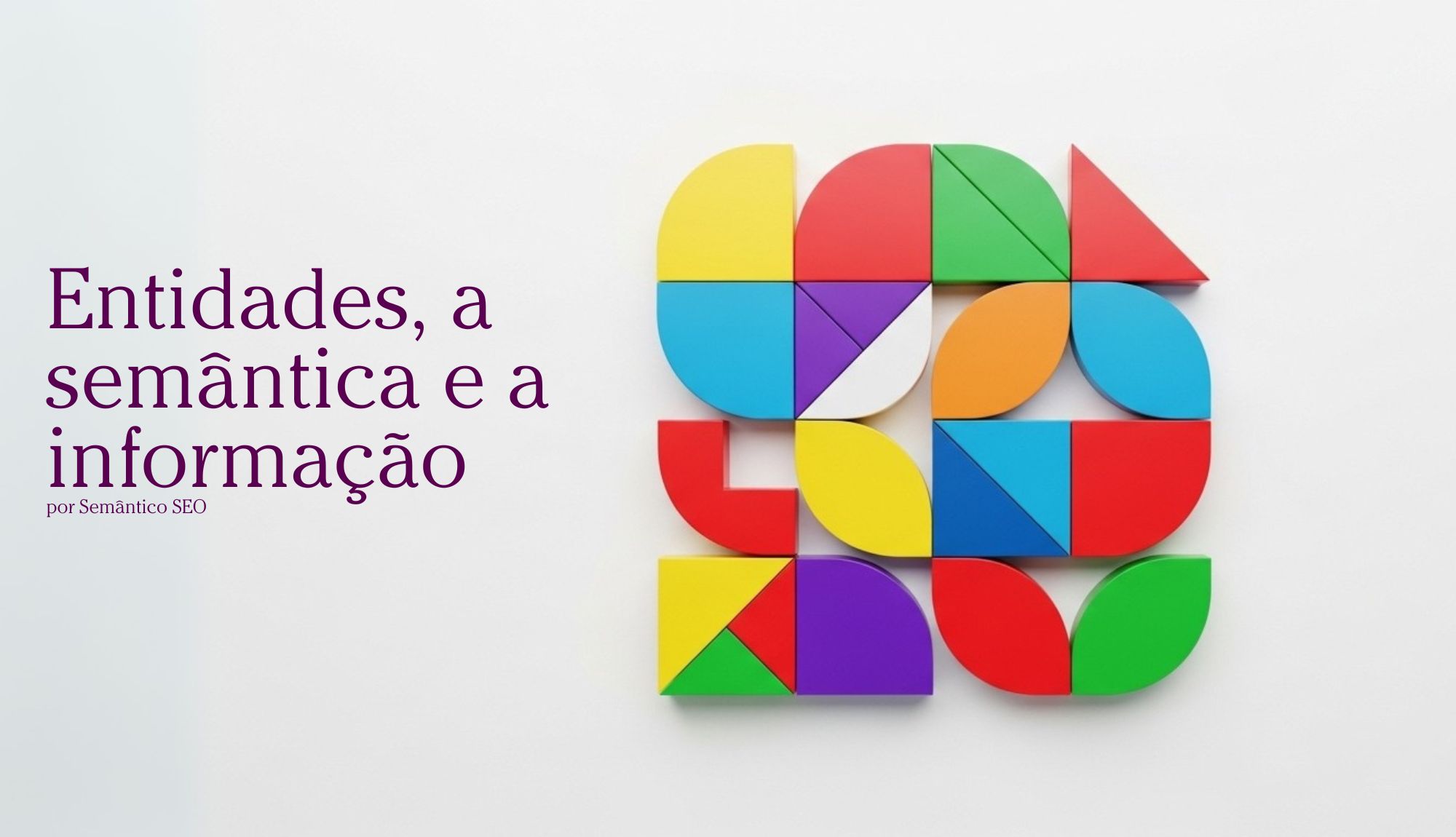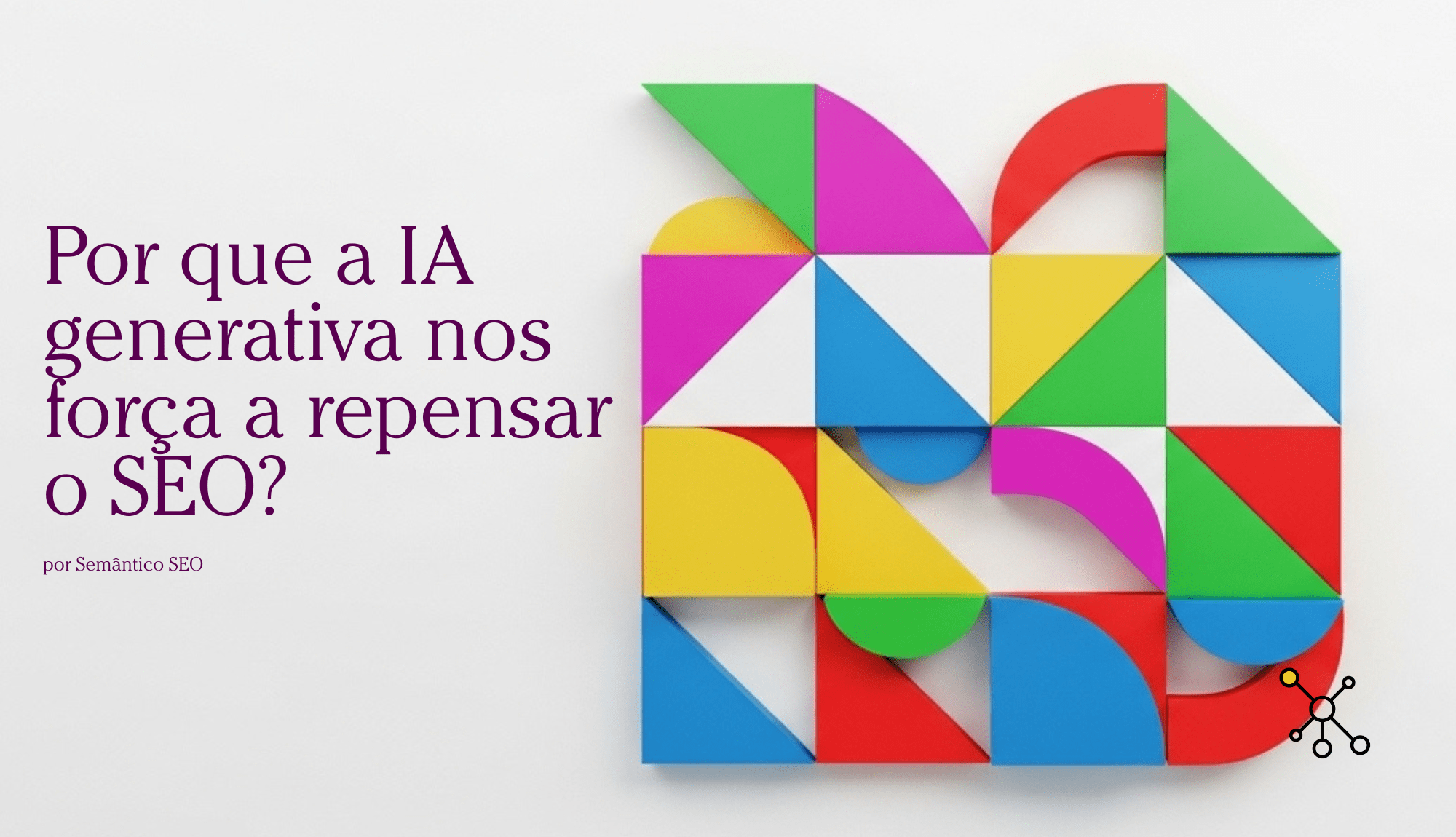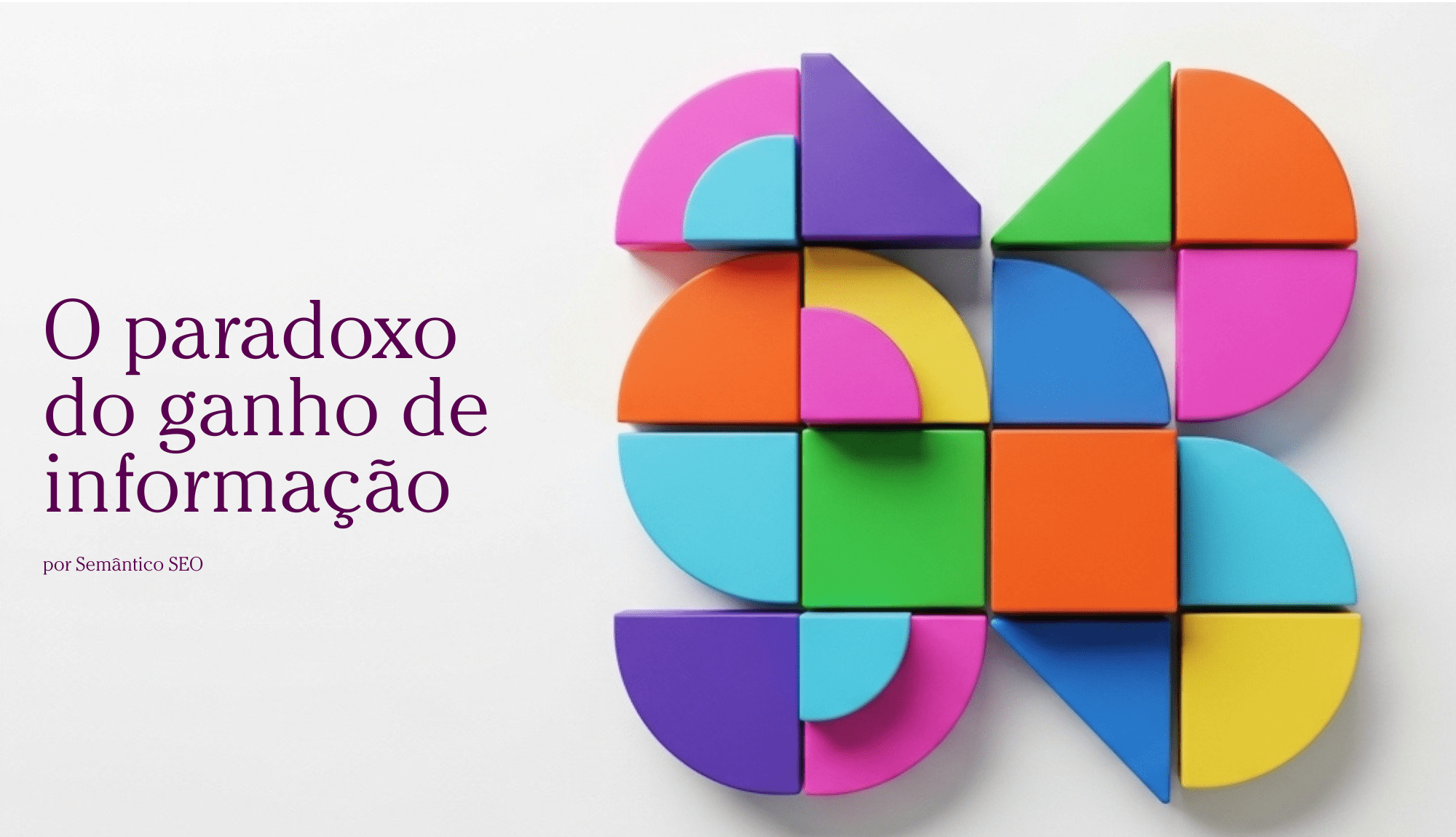Entities, semantics and information
I have a great interest in the relationship between entities, semantics, and information . SEO , which from my perspective is an activity of optimizing information retrieval (a search ), needs to be studied from the point of view of the relationship between objects in language.
Currently, in information retrieval systems (IRS), we are seeing a shift from techniques that use syntax to those that use semantic retrieval. The ease of using context to increase the rate of comprehension of the concepts and their meaning is, to me, the clear explanation for this change.
Semantic information retrieval is closely related to the structured and semantic tagging of data, used in the semantic web, natural language processing, and neural networks. Understanding this new scenario inspired me to create the Semantic Workflow, which uses tools from Information Science, such as thesauri and taxonomy, to create a map of the relationships between concepts, helping everyone working on digital projects to navigate through semantic information without getting lost.
Semantics and Information
I'm extracting this passage from the book Proper Names, in which the author analyzes identity sentences (statements that refer to a particular object):
“(…), information concerns language only insofar as it refers to the world of objects. This means that identity sentences do not simply express the information that two terms or names are used in such a way that they refer to the same object. They are not sentences about how we use the terms, because it makes no sense to judge the truth or falsehood of a usage. A usage can be correct or incorrect, but it makes no sense to say that it is false or true. What is true are the statements expressed by identity sentences when the terms flanking the identity marker refer to one and the same object.” (BRITO, 2003, p. 49)
And what does this have to do with Semantic SEO?
It lies in understanding the correct use of sentence elements in contexts and how they relate to the areas of interest in SEO: information, entities, and context.
Analyzing Brito's statement, we clearly see the relationship between the world of objects (a fundamental part of the world of entities) and information, which, in order to be expressed according to the rules of language, needs to connect these two "beings": information and the object to which it refers.
Reference is a key element in understanding the role of meaning in everything written in a sentence, for example, and its relationship to significance.
What I mean by meaning is the "still inconsistent elaborations that seek to stabilize themselves," as Vygotsky says; that is, it's something you say that needs something more to be stable for the reader or listener. And meaning needs significance (related to semantics as a field of study) to show the possibilities of meaning in an expression, in speech, or in a sentence.
That's why this concept is so important to me:
Statements expressed by identity sentences are true when the terms surrounding the identity marker refer to one and the same object.
Proper Nouns. BRITO, 2003, p. 49
Because the idea that statements created using identity clauses will be true if they refer to one and the same object is the linguistic of the problem of ambiguity in information retrieval, which is so fundamental to Information Science .
For me, the understanding is that when we need to create content that is semantically relevant in the current scenario of increasingly semantic search engines, we need to have a clear understanding of the entities that will be addressed in the text, their (precise and explicit) descriptions, and their relationship with the other entities present in the content .
Only in this way will we create good content for our two main audiences: the human and the algorithmic.




